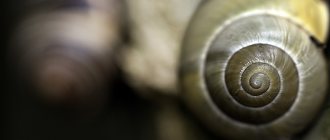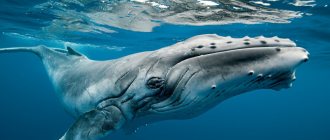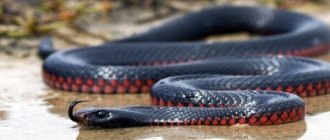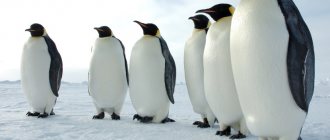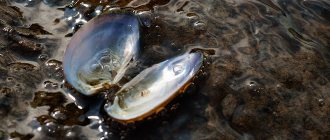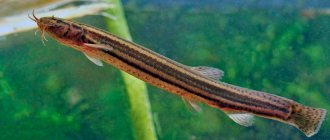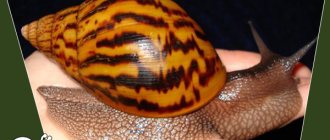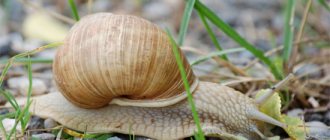The snail is an unusual creature that lives both in the wild and at home. Many people think that this is an insect, another part of humanity considers the snail to be an animal, but in fact, those who call this creature a mollusk are closer to the truth, since this animal is classified as a gastropod, a type of mollusk.
A unique feature of the snail is the presence of a hollow shell, which serves as a home for this animal. An excellent option is to have such a mollusk as a pet - no worries or hassle, and this creature will undoubtedly bring joy to its owners.
Why are snails dangerous to humans?
Many species of snails from the subfamily of pond snails (Amphipepleinae) become intermediate hosts of parasitic worms (helminths), including especially dangerous schistosomes (Schistosoma), which can enter the human body - for example, when he swims in a natural body of water.
Interesting materials:
How many people were at the Metallica concert in Moscow 2022? How many people must complain to get blocked on Instagram? How many people speak British? How many people speak Estonian? How many people play Fortnite now? How many people play computer games Statistics 2022? How many people play computer games statistics? How many people play computer games? How many people can you add as friends on Facebook? How many people were born on earth today?
Place in modern classification
Can a snail be classified as an insect or not? Or maybe she is a reptile or an amphibian? Any biology reference book will tell you the answer. According to the modern classification, snails are gastropods and nothing else, that is, they do not belong to insects, reptiles, or amphibians. But they are still animals, like the representatives of the listed types.
Gastropods are a class belonging to the phylum Mollusca. It is very numerous, and its representatives have a number of characteristic features.
Characteristics of Achatina
The average shell length of adult snails, as a rule, does not exceed 50-100 mm, but some specimens have larger dimensions, exceeding 20 cm. The snail shell is conical in shape, most often characteristically twisted precisely counterclockwise .
Mature Achatina are characterized by a shell having about seven to nine turns. The basic color of the shell directly depends on the characteristics of the environment, as well as the diet, but most often it has reddish-brown stripes and yellowish shades.
Turbo-spiral shell and asymmetry of the internal structure
The structure of the pulmonary cochlea: 1 - shells; 2 - digestive gland; 3 - light; 4 - anus; 5 - pneumostomy; 6 - eye; 7 - tentacle; 8 - brain; 9 - radula; 10 - mouth; 11 - goiter; 12 - salivary gland; 13 - gonopore; 14 - penis; 15 - vagina; 16 - mucous gland; 17 - oviduct; 18 - bag of love arrows; 19 - leg; 20 - stomach; 21 - kidney; 22 - mantle; 23 - heart; 24 - vas deferens The appearance of the turbo-spiral shell is associated with the fact that this shape ensures its greatest strength with equal volume. It is believed that turbospirality is a key factor in the formation of asymmetry in the internal structure of gastropods. Thus, in gastropods with a saucer-shaped shell (family Fissurellidae within Archigastropoda), the internal structure is symmetrical, with the exception that the right kidney is larger than the left, and there is only one gonad - the right one (the latter is typical for all gastropods). When a turbo spiral occurs, the center of gravity of the shell shifts, and in order to restore its position, the shell must be shifted to the left. Such a displacement naturally causes a reduction in the right half of the internal organs, since, firstly, greater pressure is exerted on them, and, secondly, the flow of water through the mantle cavity becomes asymmetrical. Thus, in the families Haliotidae and Pleurotomariidae (Prosobranchia), the right ctenidium undergoes reduction. In the families Trochidae and Turbinidae (Prosobranchia), the right ctenidium is completely absent, and the right atrium is greatly reduced and does not bear a functional load. Finally, Caenogastropoda (the rest of the Prosobranchia) completely lack the right ctenidia, osphradium, hypobranchial gland and atrium. The left kidney becomes the main organ of excretion, and the right one is part of the reproductive system as the renal gonoduct (distal part of the reproductive ducts).
Signs of insects
It makes sense to consider this point in order to finally understand whether the snail is an insect or not.
All representatives of the class have such bodies as:
- head;
- breast;
- abdomen;
- 3 pairs of limbs;
- 2 pairs of wings.
The only similarity with snails is the presence of an exoskeleton. In insects, its role is played by the chitinous cover, in snails - by the shell. It would be a stretch to single out size as a similar external feature, but it should be noted that different species differ greatly in size. There are giants among both snails and representatives of the arthropod phylum. However, like babies barely visible to the naked eye.
Literature
- Fausek V. A.
Gastropods // Encyclopedic Dictionary of Brockhaus and Efron: in 86 volumes (82 volumes and 4 additional). - St. Petersburg, 1890-1907. - Ivanov A.V.
Class of gastropods // Guide to Zoology, vol. 2 - Invertebrates. - M.-L., 1940. - Likharev I.M., Rammelmeyer E.S.
Terrestrial mollusks of the fauna of the USSR. - M.-L.: Publishing House of the USSR Academy of Sciences, 1952. - 520 p. - Basics of paleontology. T. 4: Molluscs - gastropods / Team of authors; Ed. V. F. Pchelintseva and I. A. Korobkova. - M.: State Scientific and Technical Publishing House of Literature on Geology and Subsoil Protection, 1960.
- Beklemishev V.N.
Fundamentals of comparative anatomy of invertebrates: In 2 volumes / Rep. ed. L. A. Zenkevich. — 3rd ed., revised. and additional - M.: Nauka, 1964. - 432 p.; 448 p. — 4500 copies. - Dogel V. A.
Zoology of invertebrates: Textbook for un-tov / Ed. prof. Yu. I. Polyansky. — 7th ed., revised. and additional - M.: Higher School, 1981. - 606 p. — 50,000 copies. - Kantor Yu. I., Sysoev A. V.
Marine and brackish water gastropods of Russia and adjacent countries: illustrated catalog = Marine and brackish water Gastropoda of Russia and adjacent countries: an illustrated cataloque / Institute of Problems of Ecology and Evolution im. A. N. Severtsov RAS, Fundamental Research Program. Presidium of the Russian Academy of Sciences “Biodiversity and dynamics of gene pools”. - M.: Partnership of Scientific Publications KMK, 2006. - 371, [140] p. — ISBN 5-87317-292-7.
- Bouchet P. & Rocroi J.-P. (Ed.); Frýda J., Hausdorf B., Ponder W., Valdes A. & Warén A. 2005. Classification and nomenclator of gastropod families. Malacologia: International Journal of Malacology
47(1-2). ConchBooks: Hackenheim, Germany. ISBN 3-925919-72-4. 397 pp. - Paul Jeffery. 2001. Suprageneric classification of class Gastropoda. The Natural History Museum, London, 2001.
- Ponder W. & Lindberg DR 1997. Towards a phylogeny of gastropod molluscs; an analysis using morphological characters. Zoological Journal of the Linnean Society 119
: 83–265.
Nervous system
The nervous system of gastropods is of the scattered-nodular type. In most advanced representatives of this class, the nerve elements are concentrated at the anterior end of the body.
As a result of torsion in gastropods, the location of the visceral nerve trunks changes, and they form a cross - a visceral loop. As a result of this process, the initially right intestinal ganglion is located above the esophagus, and the left one is located below the esophagus. This phenomenon is called chiastoneuria.
However, in groups of opisthobranch and pulmonate snails, a return to the original plan of the structure of the nervous system occurs: in opisthobranchs due to detorsion, and in pulmonary snails due to a forward displacement of the ganglia.
There are 5 pairs of ganglia: cerebral (head), pedal (foot), pleural (mantle), parietal (respiratory), visceral (internal organs). Sense organs: eyes, osphradia, organs of touch, edges of the mantle.
Nutrition
In nature, the diet of snails depends on their habitat. Herbivorous gastropods feed on sedges, grass, cabbage leaves, sorrel, bark and other vegetation. As they grow older, these snails may change their food preferences and begin to feed on decaying vegetation or even carrion.
Species of gastropods, classified as predators, eat their younger relatives, worms, flies and mosquitoes, and snails living in the seas eat fish, preying on them with the help of their paralyzing poison.
Pet clams living in an aquarium can be fed fish food, finely chopped vegetables, algae tablets or aquarium plants.
Types of snails: marine, freshwater, land, gill and pulmonate
The most poisonous snail. The geographic cone snail (Conus geographus) is a native of the tropical and subtropical Indo-Pacific regions, found along the northern coasts of Australia. Their surrounding habitat includes live or fragmented coral reefs and sandy areas in tidal zones. They are less common in deeper waters.
The most poisonous snail Conus geographus
The geographic cone snail can kill 15 people with one bite. Symptoms include excruciating pain in the penetrating area, much worse than a bee sting. As the pain subsides, numbness soon sets in, followed by dizziness, slurred speech, and respiratory paralysis. Death may follow within half an hour after this, but such cases are rare. There is currently no known anti-venom; applied pressure to the wound, immobilization and artificial respiration (mouth-to-mouth resuscitation) are the only recommended treatment for the victim.
The smallest snail. The snail Angustopila dominikae is easy to miss, but several tiny shells were found among soil samples found beneath limestone rocks in China. They contained no snails, but the size of the shells indicates that the animals were less than 1 mm long, with the smallest specimen being only 0.86 mm long.
Angustopila dominikae - the smallest snail
The biggest snail. Australia is home to the world's largest snail, the Australian whelk (Syrinx aruanus). The record representative is a snail with a long shell of 91 cm and a weight of 18 kg. On average, the Australian whelk grows up to 70 cm long. They are predatory snails and feed on large live polychaete worms. Due to their popularity, large specimens are now rare, although juveniles often wash ashore after storms and cyclones in northern Australia.
The largest snail Syrinx aruanus
According to their habitat, all snails are divided into land, freshwater and marine, and according to the type of respiration - into pulmonary and gill snails.
Pulmonary snails. About 35,000 species are known, which are usually classified as pulmonate snails. The species characteristic is a functional lung, which was formed from the mantle cavity. To take air into the respiratory organs, they have a breathing hole located at the edge of the snail shell or in the front part of the muscular body. Typical representatives of this group are grape snails (Helix pomatia), coil snails (Planorbidae), Achatina (Achatina) and various slugs.
Helix pomatia
Gill snails. In species that live in the salty waters of seas and oceans, as well as in freshwater bodies of water, gills are located in the mantle cavity.
In addition to the organs that supply the snail’s body with oxygen, the mantle contains the exit ducts of the kidneys, which also includes the reproductive apparatus and excretory system. Among the known species of gill snails are Bithynia, lawn snails (Viviparidae), whelks (Buccinum) and many others. etc. Tags Snails
Signs of gastropods
First, we note that all mollusks are invertebrate multicellular organisms.
Torsion is the main distinguishing feature of all snails. Scientists use this term to describe the twisting of the internal cavity by 180°. For the vast majority of gastropods, a characteristic feature is also the presence of a spiral shell. There is a special form - slugs, which are not snails. Their shell disappeared during the process of evolution.
Another characteristic characteristic of all gastropods (gastropods) is the asymmetrical structure of the body and internal organs. These creatures move with the help of their legs, which are covered with mucus for better gliding and protection from mechanical damage. In case of danger, the leg can also be retracted into the shell, like the head.
As you can see, any snail has all of the listed features. This means that we have every reason to believe that the statement that a snail is an insect is erroneous.
Animals belonging to the class of gastropods initially spread in the aquatic environment. But later, many families adapted to life on land and even acquired lungs. Today, gill-breathing species exist alongside those that obtain oxygen from the air.
Brothers in Confusion
The question of whether a snail is an insect or not is a fairly common one. But similar confusion sometimes arises with other animals. Insects are often mistakenly classified as spiders, scorpions, mites and worms.
To determine whether a creature is an insect, you should not be guided only by its size and habitat. The list of class characteristics that we discussed above will help you avoid mistakes. For example, a spider has 4 pairs of legs and no wings, which means it cannot be an insect. And the earthworm does not have a single feature characteristic of arthropods.
Who are slugs
Another common misconception is that similar-looking individuals with and without shells belong to the same species, but have different sexes or ages. When understanding the issue of the species of snails, it should be remembered that slugs are not a stage of development and not a gender characteristic, but a general name for a number of mollusks that descended from gastropods, losing their shell.
It is noteworthy that similar forms were formed in different families of gastropods, both terrestrial and underwater. Therefore, scientists do not distinguish slugs into a separate taxon, using this term as a collective name for representatives of different species. Of course, slugs are not insects either.
Notes
- Cuvier G.
Second mémoire sur l'organization et les rapports des animaux à sang blanc, dans lequel on traite de la structure des Mollusques et de leur division en ordres, lu à la Société d'histoire naturelle de Paris, le 11 Prairial, an III (French) // Magazin Encyclopédique, ou Journal des Sciences, des Lettres et des Arts. - 1795. - Vol. 2. - P. 433-449. - Biological encyclopedic dictionary / Ch. ed. M. S. Gilyarov; Editorial team: A. A. Baev, G. G. Vinberg, G. A. Zavarzin and others - M.: Sov. encyclopedia, 1986. - P. 83. - 831 p. — 100,000 copies.
- Higher taxa of animals: data on the number of species for Russia and the whole world
- Bouchet P., Rocroi J.-P., Hausdorf B., Kaim A., Kano Y., Nützel A., Parkhaev P., Schrödl M. and Strong EE
Revised Classification, Nomenclator and Typification of Gastropod and Monoplacophoran Families // Malacologia. — 2022. — Vol. 61, no. 1-2. — 1—526 s. - doi:10.4002/040.061.0201. - Gastropoda (English) in the MolluscaBase database. (Accessed: October 18, 2021).
- Life of animals. In 7 volumes/ch. ed. V. E. Sokolov. — 2nd ed., revised. - M.: Education, 1984. - T. 3: Arthropods: trilobites, chelicerates, trachein-breathing. Onychophora / ed. M. S. Gilyarova, F. N. Pravdina. - P. 51. - 463 p. : ill.
Reproduction
Snails usually lay their eggs in special egg capsules. These capsules have a hard outer shell. So that the larvae can get out of the capsule, the capsule has a special cap - by the time the offspring is ready to leave the capsule, the cap falls off or dissolves. Snails usually lay eggs in large groups called clutches. If the capsules look like small glasses on legs, then they are arranged in rows in the masonry. If the capsules are oval, then the masonry looks like a lump. It often happens that there are no eggs in the capsules located at the edges of the clutch - a predator that attacks such a clutch will gnaw through several empty capsules and leave without causing any harm to the eggs.
Pelagic larvae called veliger hatch from the clutches of many sea snails. The veliger moves with the help of large blades or outgrowths covered with cilia. These cilia constantly vibrate, creating a flow of water, which allows the larvae to swim and also collect small particles of food. Veligers of some species can live in the water column for weeks. The veliger's sail gradually decreases, and the snail itself becomes more and more similar to an adult snail. Finally she falls to the bottom and begins to crawl.
For many snails, only a few snails (non-pelagic) mature in one clutch. The remaining eggs are needed only as food for young snails (trophic eggs). The more trophic eggs, the larger the snails emerging from the clutches will be. There are also viviparous snails.
How many teeth does a snail have? And does she have teeth?
All snails have a special organ in their mouth called the radula. It combines the functions of teeth and tongue and consists of a cartilaginous plate on which cochlear teeth of various shapes are located in several rows.
Photo: Evan Butterfield
Snails that feed on plant foods have small teeth, while in predatory species they are larger, and their shape can be in the form of a hook or a pike. In total, a snail can have up to 25,000 teeth. Some poisonous snail species have teeth that have a cavity inside them. Toxins flow down it from a special gland and paralyze the victim.
